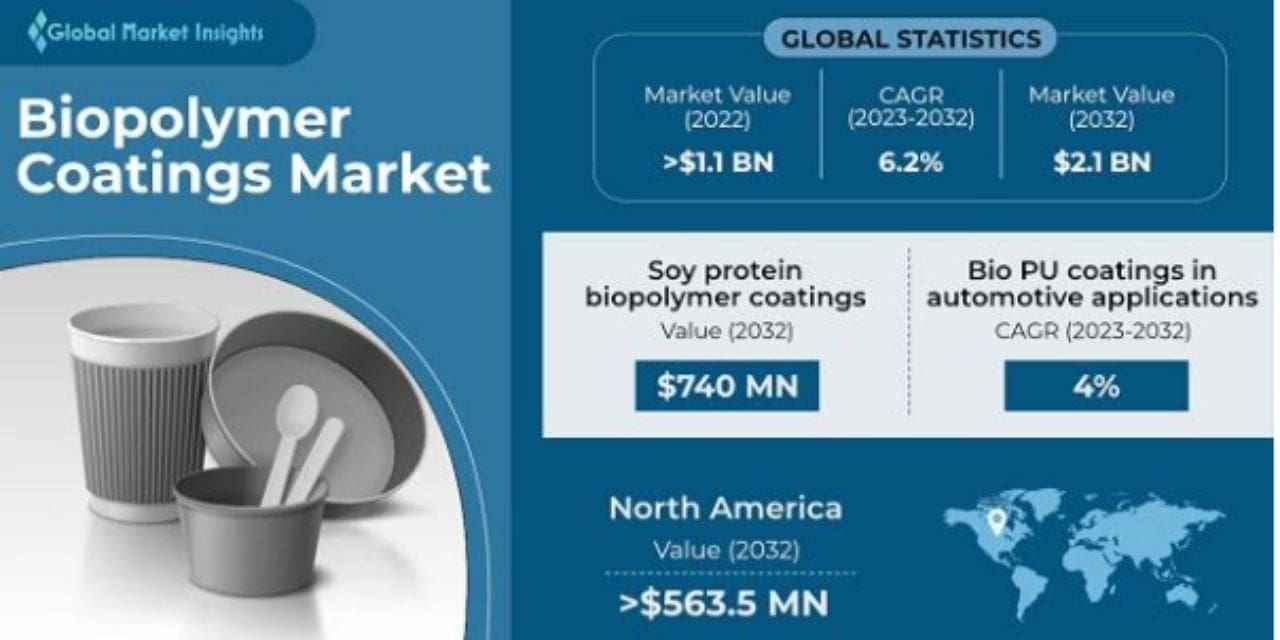The biopolymer coatings market is slated to grow significantly through 2032 given the rising popularity of bio-based polymers over synthetic materials and polymers derived from fossil fuels. Besides, alarming environmental concerns around the use of synthetic packaging coatings would boost the demand for biopolymer coatings in the years ahead.
Renewable biopolymers can be utilized as barrier coatings on paper packaging materials owing to their ability to retard unwanted moisture transfer in food products. Moreover, biopolymers offer exceptional barrier to oxygen and oil, boast of high biodegradability, and have the potential to replace current paperboard and synthetic paper coatings.
Ongoing research and development projects by institutions and companies to launch new products would promote the industry progression over the span of 2023-2032. For instance, Rutgers University scientists announced developing a starch-based biopolymer coating with naturally occurring antimicrobial ingredients. The study, which was conducted in collaboration with researchers at Harvard University and sponsored by Harvard-Nanyang Technological University/Singapore Sustainable Nanotechnology Initiative, indicated that the biopolymer coating could be used onto food to protect against contamination, transportation, and spoilage damage.
Overall, the global biopolymer coatings market is bifurcated in terms of product by application and region.
Based on the product by application, starch coatings are projected to observe massive traction across the food and beverages applications. Some of the renewable resources used to develop biopolymer-based packaging materials include polysaccharides, proteins, and lipids. These components offer unprecedented environmental benefits of recyclability and reutilization. Starch coated paper packaging also emerges as an economical solution for keeping various food product fresh. Not to mention, surge in disposable incomes and increased reliance on convenient foods would add to the segmental growth in the ensuing years.
Companies are investing in starch-based food packaging coating to offer eco-friendly packaging solutions to the F&B industry players. For instance, Ingredion launched its sustainable barrier starch, FILMKOTE 2030. The product stands as an ideal replacement option for food contact packaging thus enabling producers to replace fluorochemicals in food service packaging.
From the regional viewpoint, Asia Pacific biopolymer coatings market would depict more than 6.5% CAGR between 2023-2032, subject to the rising demand for convenience food, better health products, and personal care. These coatings are generally used in paper and paperboard packaging materials, which would imply that the expanding paper and paperboard industry due to the increasing disposable incomes in India, China, and Japan, would add to the market prospects.

